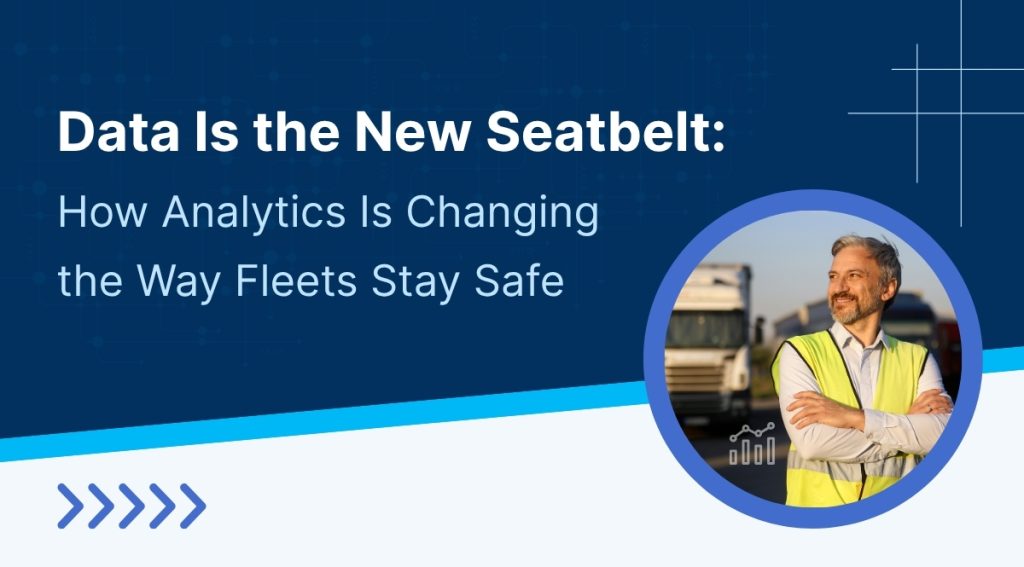Back in the late ’60s, seatbelts completely changed the game in the automotive safety space. What was once optional quickly became a no-brainer – an essential safeguard that has saved countless lives. Today, data is stepping into that same role for fleets. It’s not just about teaching safe driving anymore – it’s about using smart tech and powerful insights to stop accidents before they happen.
A New Era for Fleet Management
We’ve come a long way since the early days of GPS tracking. Today’s telematics systems pull in data from just about every angle – location, braking, acceleration, driver habits, even the weather. With that level of insight, fleet managers can spot trouble early and act fast, keeping their people and vehicles safer than ever.
Artificial intelligence has pushed this evolution even further. AI tools now sift through this constant stream of data to pinpoint risky patterns, alert drivers and supervisors in real time, and even schedule maintenance before problems arise. In one study, organizations reported up to 30% reduction in accident rates within the first year of implementing AI-enhanced telematics systems[1]. That kind of shift from reacting to crashes to preventing them entirely – is a game changer.

Using Data to Understand Driver Behavior
One of the biggest wins in all of this? Getting a clear view into how drivers are actually performing on the road.
1. Real-Time Detection
Smart video telematics can now detect harsh braking, rapid acceleration, and speeding the moment they happen. Drivers receive instant feedback, allowing them to self-correct before risks escalate[2].
2. Accuracy with AI
These systems don’t rely on assumptions. Modern AI models can identify behaviors like tailgating or distracted driving with up to 99% accuracy, enabling real-time alerts that promote safer driving habits[3].
3. Smarter Video Review
Modern video telematics systems now leverage artificial intelligence to streamline incident detection and review. Rather than requiring managers to manually sift through extensive footage, AI tools automatically identify and flag only the most relevant safety events – such as harsh braking, distracted driving, or unsafe following distances.
According to the British Safety Council, these technologies can reduce video review time by as much as 99%, enabling fleet supervisors to focus their efforts on actionable insights and targeted driver interventions[4]. This level of efficiency not only improves operational productivity but also enhances the effectiveness of safety programs across the fleet. Beyond individual safety, this kind of monitoring also enhances regulatory compliance. Tools like automated safety dashboards, telematics-integrated MVR checks, and AI-backed logs streamline compliance efforts and reduce human error-making it easier for managers to meet evolving transportation regulations.
Predicting Problems Before They Happen
What’s really exciting is where all this is headed: predictive analytics.
Let’s say a driver’s lane-keeping starts to falter late in the shift – this could be a sign of fatigue. Or perhaps a truck’s braking behavior subtly changes – a red flag for looming maintenance issues. These early signals, caught through telematics, give managers a chance to act before incidents or breakdowns occur.
Predictive systems also help prioritize events that matter most – like collisions, near-misses, or sharp upticks in risky driving behaviors. These tools aren’t just preventing problems; they’re transforming the way risk is managed.
Looking Ahead
Just like seatbelts once did, analytics are becoming a non-negotiable part of fleet safety. Managing without real-time insight isn’t just outdated – it’s dangerous.
The technology to make fleets safer, smarter, and more efficient already exists. The question isn’t whether you’ll use it – but how soon.
Because in today’s world, data isn’t just helpful. It’s lifesaving.
References
- SAFED Project Report – Virginia Tech Transportation Institute
- Comprehensive Study of Driver Behavior Monitoring Systems Using Computer Vision and Machine Learning | Journal of Big Data
- Fleet Risk and Safety Analytics: A Data-Driven Approach | arXiv
- Empowering Driver Management with Fleet and Video Telematics Innovation | British Safety Council India




